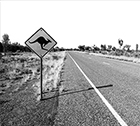
The following are excerpts from Crocs in the Cabinet — Northern Territory politics an instruction manual on how NOT to run a government, by Ben Smee and Christopher A. Walsh. Published by Hachette Australia and available in good bookstores today.
Introduction
Adam Giles stopped answering calls about 12.15am the night he was rolled as the Northern Territory’s chief minister. It had been a sweaty, nervous night in the middle of the Wet, and the heat had hit his penthouse apartment overlooking the Arafura Sea at the end of the Darwin Esplanade. As a thunderstorm roiled in the distance, his phone was resting 12 floors below, at the bottom of the building’s swimming pool.
The police had tapped his phone, Giles was sure, as he settled in for a few beers and to plot his next move with his last remaining ally, Dave Tollner.
We had spoken to him about four times that day as the coup unfolded. Giles’s mood had changed from denial, to anger, to bargaining.
He first denied any knowledge of an unfolding coup. Later he raged about the stupidity of it. And in our last conversation, just after midnight, before the phone was hurled from the balcony, he seemed to think there was a way to fight on.
“I haven’t resigned, make sure that’s clear,” Giles said. There was surely no way back. All but five members of his government had signed a letter demanding his removal. Giles’ own resignation letter had been prepared and hand-delivered to him by cabinet secretary Gary Barnes, where it sat unsigned on his kitchen table in a blue folder.
As Giles and Tollner lit cigars, the rough outline of a conspiracy started to take shape. They sipped beers from Country Liberal Party stubby coolers that depicted Giles as a frontier cowboy, wearing a broad-brimmed hat and riding a bucking horse. The legend of the Territorian ideal of maverick and manliness, created on the frontier the CLP had ruled for twenty-seven consecutive years, was embodied in the boy from the NSW Blue Mountains.
He wasn’t going to back down because a few wimps said so.
What followed over the next 24 hours was one of the most remarkable episodes in Australian political history.
Giles, the dumped leader, simply refused to go. During a shambolic caucus meeting the following afternoon he kicked the table and threatened to take his few remaining allies to the crossbench. Members of the Legislative Assembly (MLAs) were in tears as accusations and threats flew across the room. The plotters had botched their plan by assuming Giles would resign graciously and go.
The chief minister survived to fight another day, with a few scuff marks on his usually well-polished RM Williams boots as battle scars.
Throughout an extraordinary four-year term, commentators were always trying to count the numbers, or to divide the party into factions as a way to chart and explain the internal turmoil. The truth was, the CLP wing had no firm allegiances, no factions or groups. There were 16 factions of one, and between 2012 and 2016 at least seven of them made leadership bids in some form or another.
The team that won the 2012 election included a dogcatcher, a goat farmer, a publican, a gift-shop owner, a shock jock and a mango grower. Seven of the original 16 MLAs resigned from the party.
There were 18 cabinet reshuffles and eight different deputy leaders, most of them forced out through resignations or sackings. One minister was ousted after sending lewd videos of himself masturbating to a woman.
Another was threatened in a seedy Tokyo girly bar after racking up a $5000 bar tab he couldn’t pay.
Yet another found himself in hot water for dealings with his Vietnamese mistress’ company, and shouted “We are in love!” on the floor of Parliament.
The term “circus” barely does the NT class of 2012 justice.
In Canberra, the same few years had been a constant power game of scheming and shifting alliances.
But Territory politics is not played by counting numbers. It’s a blood sport. Kill or be killed.
Every member of the CLP government will walk away from politics feeling some bitterness about those four years and few will look back fondly on Giles as a great leader.
But Giles was not the chief minister because he was popular with his colleagues, or had the numbers to win a leadership vote.
He was there because he was the alpha male, the strongest performer — the most ruthless and the most willing to strike to defend his territory.
In the croc-eat-croc world of the Northern Territory, Adam Giles was the biggest crocodile in the cabinet.
***
Sex, Lies and videotape
On Valentine’s Day 2016, the same day Willem Westra van Holthe resigned from cabinet for blurring the lines between business and pleasure, a man nobody had ever laid eyes on named Steven James took to Facebook to offer the object of his affection a stirring testament of his undying lust. Her name was Kendra Morris and, like her suitor, nobody had ever seen her before either.
This was a secret love blossoming in the form of florid prose on social media. There was something hot and exhilarating about the secrecy of it all, Steven thought to himself while he penned, “Oh darling. My heart is a flame for you … not just a spark but a bonfire.”
“Of course it is,” she responded. “Anything less and you wouldn’t be dating me.”
“And my loins are stirring for you baby …” Steven wrote back right away.
“Are they really?” Kendra asks. How could she not know?
“You should do something about that … with me.”
“Should I Valentine you baby?” Steven asked.
“Always, not just today. You’re so sexy, Steven. I can’t wait to get a hold of you.”
That was about the greatest thing a woman had ever said to Steven James. Few who befriended him on Facebook knew Steven James had a big secret and it extended much further than his dirty private messages to Kendra.
Steven James’ real name was Nathan Barrett. And he’d recently been told by the chief minister that he would be the next Treasurer of the Northern Territory.
Steven James was cool and confident and could get away with telling a woman his loins were burning for her. Or telling the chief justice of the Northern Territory that he was a loser and soft on crime. Or laughing at small business owners who went out of business after 40 years. He didn’t take shit from anybody and he always said what he thought. At least on Facebook.
The photo of Steven on Facebook was of a young guy in his late twenties wearing a T-shirt with a strong, tight frame.
The real Steven James — or the man behind Steven James — was actually a short, albeit muscular, man in his early 40s with a penchant for ill-fitting suits, with sleeves that extended far past the wrist, down to his fingers. That man had three kids and a wife he first met at school when she was a teenager and he was her 23-year-old teacher. He taught “religious perspectives” at a Darwin Christian school, danced at nightclubs in bright gold day-glo underwear, ran a gym, worked on the wharves and studied for an MBA before entering politics.
Nathan Barrett was a deeply religious man, a pillar of the community from the Apostolic Church in Palmerston, who took great pride in community affairs and was known locally for quietly going out and painting over the giant spray-painted phalluses that gifted teenage artists loved to share with the public on cement canvases all over the satellite city. He respected the Bible and all its theological teachings including, presumably, the sections about the lust of the flesh.
Four months after Valentine’s Day, a video surfaced of the minister pleasuring himself in his parliamentary office.
We broke the story.
***
Foundation 51
Much of Darwin’s modern character was forged in the aftermath of the Japanese bombing of 1942 and Cyclone Tracy in 1974. Razed twice in 32 years, the city was a frontier that was never finished, where wild days seemed to never end.
It also attracted all sorts — accountants, tradesmen and businessmen — as well as shysters and shonks looking to make a quick and an easy fortune. By the 1980s Darwin was a booming little metropolis, with cash pouring in from Canberra and the rebuilding efforts from Cyclone Tracy still keeping people in good work and healthy libations. The population was soaring on the back of high wages and a prosperous economic outlook.
It was known that one of the best ways to make a buck was to be in the government’s good graces. A Four Corners episode in 1991, “Big Bucks Country”, highlighted the extent to which the then-government was “in bed with big business”. Chief minister Marshall Perron told the program the NT government rarely went to tender for major projects, “particularly in the development area, where you encourage entrepreneurs to come forward with proposals which will have a benefit clearly to themselves, to government and to our constituents”.
Companies that made big donations to the CLP consistently won government contracts. That trend of big donors winning public work continued apace under the new CLP, though there’s never been any evidence that those companies were unduly favoured.
Graeme Lewis was CLP Treasurer and president in the 1980s. Party figures in the old days tended to take on backroom positions as a way of earning their stripes to run for Parliament, but those who knew Lewis then say he didn’t harbour those same ambitions. He was a CLP man with a CLP heart and, to back it up, a CLP wallet. The party had a special place for a smart accountant who could handle large sums of money discreetly.
Lewis set up a company, Carpentaria Pty Ltd, to manage donations and other party funds. He told Four Corners that Carpentaria was “a body set up for the members of the Country Liberal Party in order to simply fund our election campaigns”.
Lewis was charged by the Electoral Commission in 1987 for failing to provide them with information on Carpentaria, an offence that was proved but no conviction recorded.
By 2001, when the CLP lost power, people like Lewis had withdrawn to other quiet pursuits. But during the 2008 election, Lewis had been brought back into the fold. Donations had dried up in opposition, and the party’s coffers were bare.
Lewis started pumping his own money into the party, as did others, and he again took an active role in polling and research.
In early 2008 Lewis, as party Treasurer, got together with Opposition Leader Terry Mills and his chief of staff James Lantry to hash out a plan to connect a group of inexperienced MLAs with members of the local business community. Foundation 49 was concocted to give the CLP’s class of 2008 a free-market education. The “49” came from the 49 companies and individuals who had donated to the Country Liberals before the 2008 election, but since the name was already taken according to ASIC records, Foundation 51 became the handle.
*This article was originally published at Crikey blog The Northern Myth








Crikey is committed to hosting lively discussions. Help us keep the conversation useful, interesting and welcoming. We aim to publish comments quickly in the interest of promoting robust conversation, but we’re a small team and we deploy filters to protect against legal risk. Occasionally your comment may be held up while we review, but we’re working as fast as we can to keep the conversation rolling.
The Crikey comment section is members-only content. Please subscribe to leave a comment.
The Crikey comment section is members-only content. Please login to leave a comment.